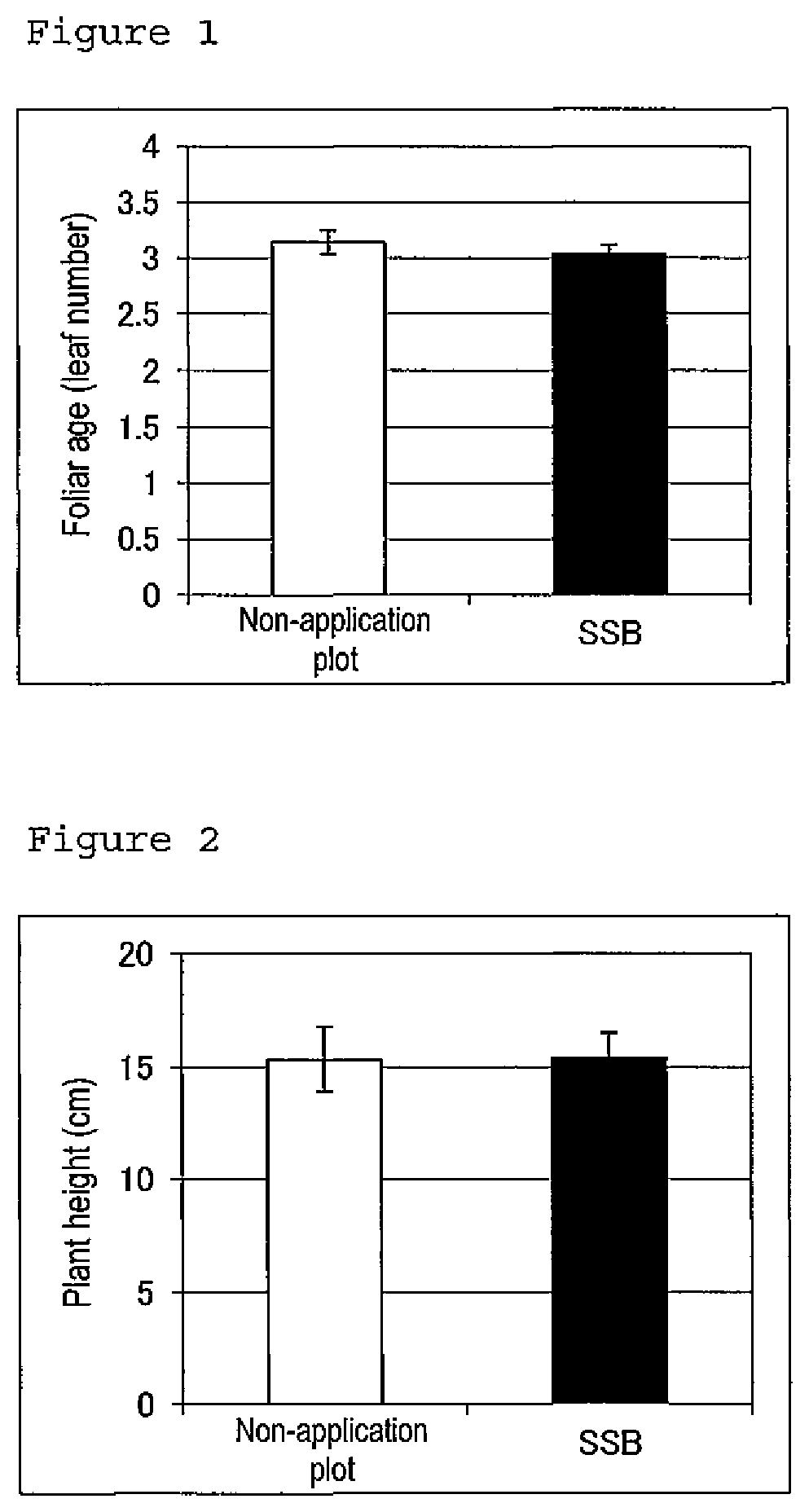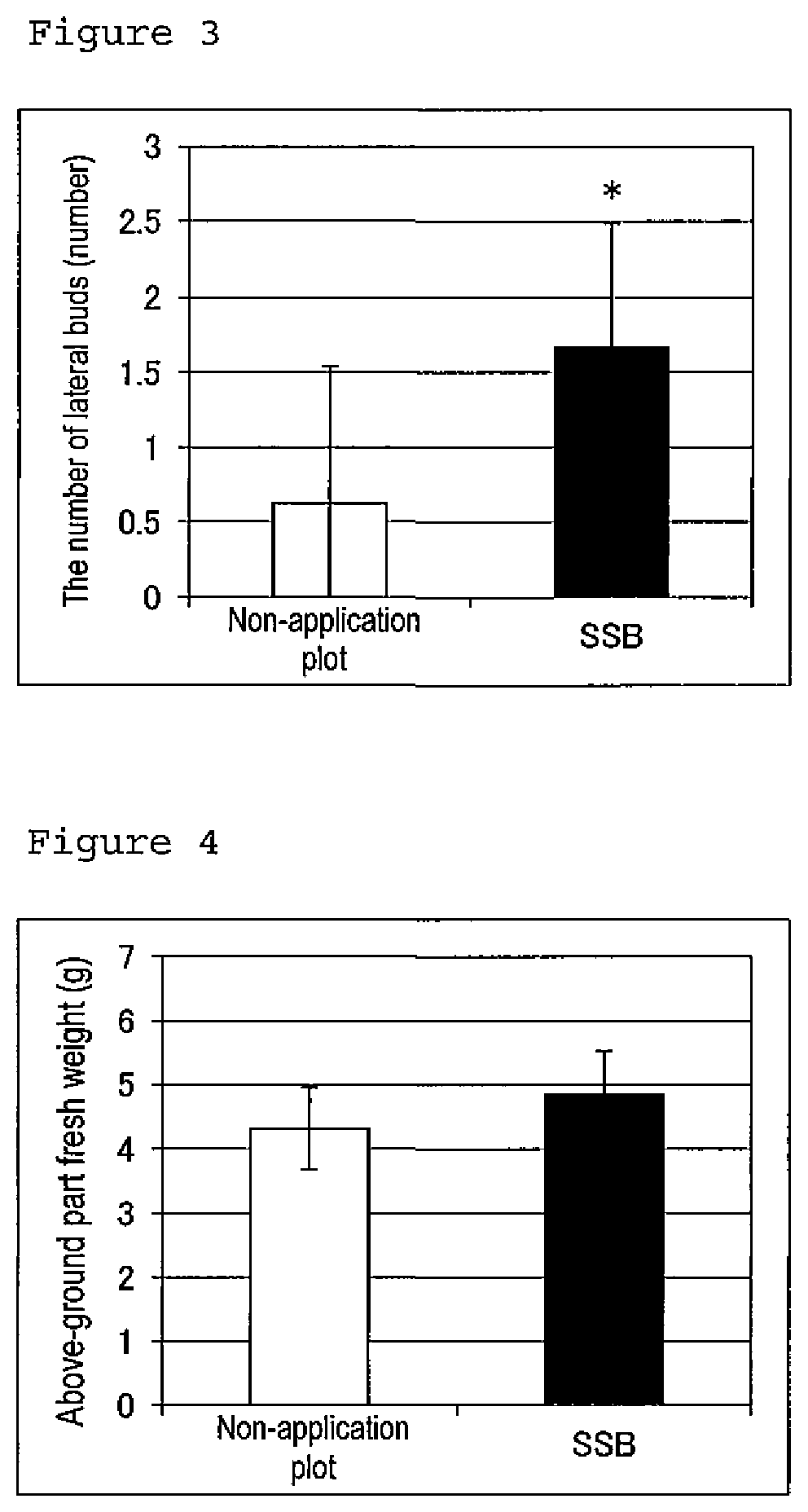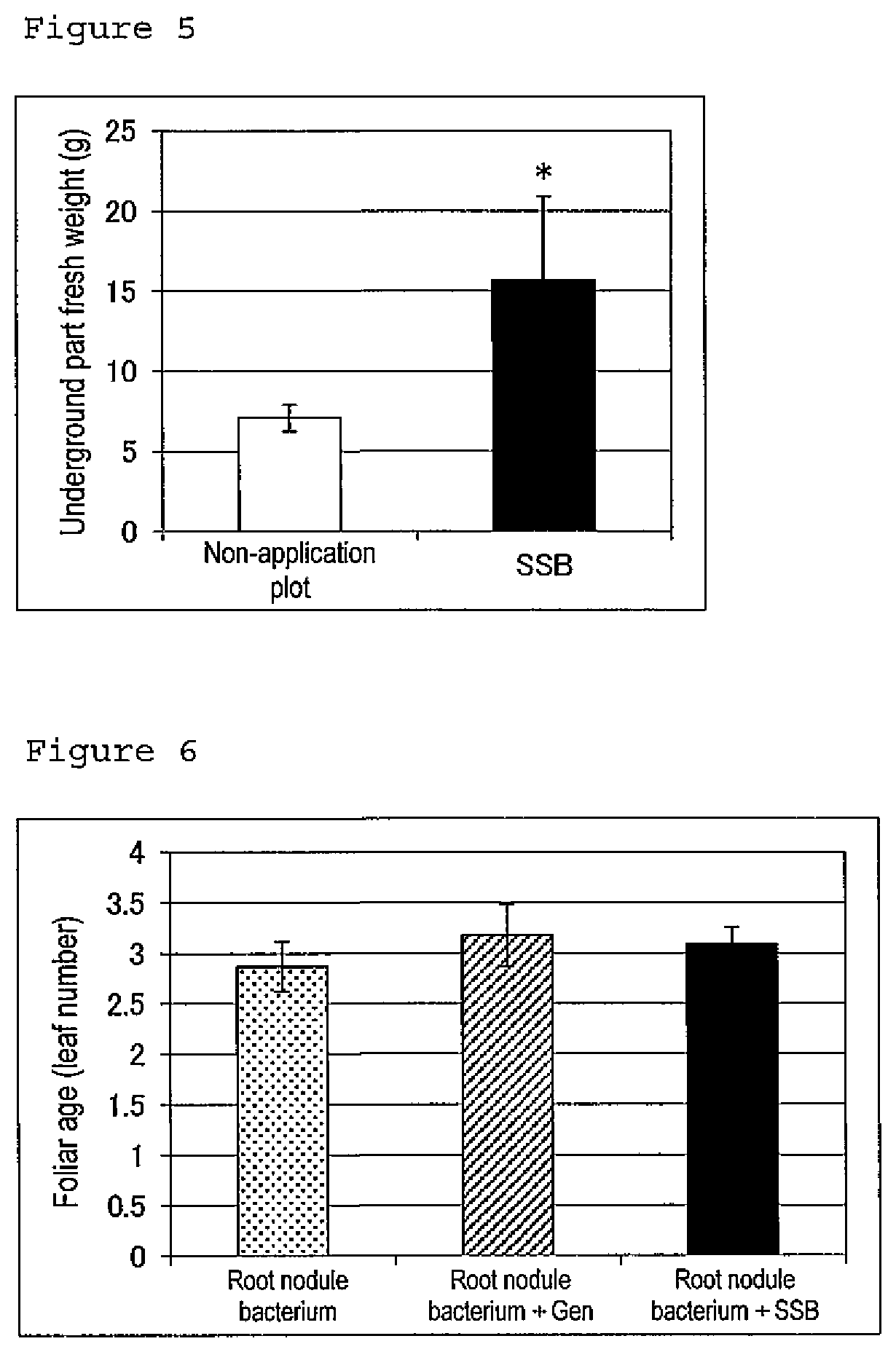Promoter for leguminous plant growth
a technology for ddmp saponin, which is applied in the field of components promoting the growth of leguminous plants, can solve the problems of not increasing yield, ddmp saponin is chemically unstable, and the yield of these leguminous plants is important,
- Summary
- Abstract
- Description
- Claims
- Application Information
AI Technical Summary
Benefits of technology
Problems solved by technology
Method used
Image
Examples
example 1
[0169](Effect of Soyasaponin Bb on Soybean (Glycine max) Growth)
[0170]Each Leonard jar (Soil Science and Plant Nutrition, 1983, 29: 97-100) filled with approximately 65 g of culture soil (Takii water-containing cell culture soil TM-1, Takii & Co., Ltd.) was irrigated with 100 mL of tap water. Then, two seeds of soybean (cultivar “Ryokuheki”, Kaneko Seeds Co., Ltd.) were sown by burying at a depth of approximately 1 cm from the culture soil surface. 1 mL of a solution of 20 μM soyasaponin Bb (soyasaponin I, ChromaDex, Inc.) dissolved in 50 mM TAPS buffer (pH 7.7) was added dropwise onto the culture soil covering the seeds using a micropipette. The soyasaponin Bb concentration in the culture soil was approximately 0.3 ppm (ppm by mass; the same holds true for the description below). 50 mM TAPS buffer (pH 7.7) was applied as a control (soyasaponin Bb non-application plot) in the same way as above.
[0171]Plant cultivation was performed in a plant growth chamber (LPH-350SP, Nippon Medical...
example 2
[0173](Effect of Soyasaponin Bb on Soybean (Glycine max) Growth: Used in Combination with Root Nodule Bacterium Material)
[0174]Each Leonard jar filled with culture soil (Takii water-containing cell culture soil TM-1, Takii & Co., Ltd.) was irrigated with 100 mL of tap water. Then, a root nodule bacterium material (“Dr Mametaro®” (Idemitsu Kosan Co., Ltd.) was distributed at a thickness on the order of 5 mm onto the culture soil in the jar using a spatula. Two seeds of soybean (cultivar “Ryokuheki”, Kaneko Seeds Co., Ltd.) were sown by burying at a depth of approximately 1 cm from the culture soil surface. 1 mL of a solution of 20 μM soyasaponin Bb (soyasaponin I, ChromaDex, Inc.) dissolved in 50 mM TAPS buffer (pH 7.7) was added dropwise onto the culture soil covering the seeds using a micropipette. The soyasaponin Bb concentration in the culture soil was approximately 0.3 ppm. Only 1 mL of 50 mM TAPS buffer as a negative control and 1 mL of 20 μM genistein (Gen) solution as a posit...
example 3
[0177](Effect of Soyasaponin Bb-Containing Soybean Saponin Formulation on Soybean (Glycine max) Growth: Used in Combination with Root Nodule Bacterium Material)
[0178]A soybean saponin formulation containing approximately 10% (w / w) of soyasaponin Bb (“saponin, soybean-derived”; Wako Pure Chemical Industries, Ltd.) was added at a given concentration (0 ppm, 50 ppm, 100 ppm or 500 ppm) into a root nodule bacterium material (“Dr Mametaro®” (Idemitsu Kosan Co., Ltd.). Each Leonard jar filled with culture soil (Takii cell culture soil TM-1, Takii & Co., Ltd.) was watered overnight from the bottom. Then, approximately 2 g (wet weight) of the root nodule bacterium material to which the soybean saponin formulation had been added was distributed at a uniform thickness onto the culture soil in the jar. The soyasaponin Bb concentration in the culture soil was 0.15 to 1.5 ppm. A jar containing only the culture soil was provided as a control (non-application plot). One seed of soybean (cultivar “...
PUM
 Login to View More
Login to View More Abstract
Description
Claims
Application Information
 Login to View More
Login to View More - R&D
- Intellectual Property
- Life Sciences
- Materials
- Tech Scout
- Unparalleled Data Quality
- Higher Quality Content
- 60% Fewer Hallucinations
Browse by: Latest US Patents, China's latest patents, Technical Efficacy Thesaurus, Application Domain, Technology Topic, Popular Technical Reports.
© 2025 PatSnap. All rights reserved.Legal|Privacy policy|Modern Slavery Act Transparency Statement|Sitemap|About US| Contact US: help@patsnap.com



